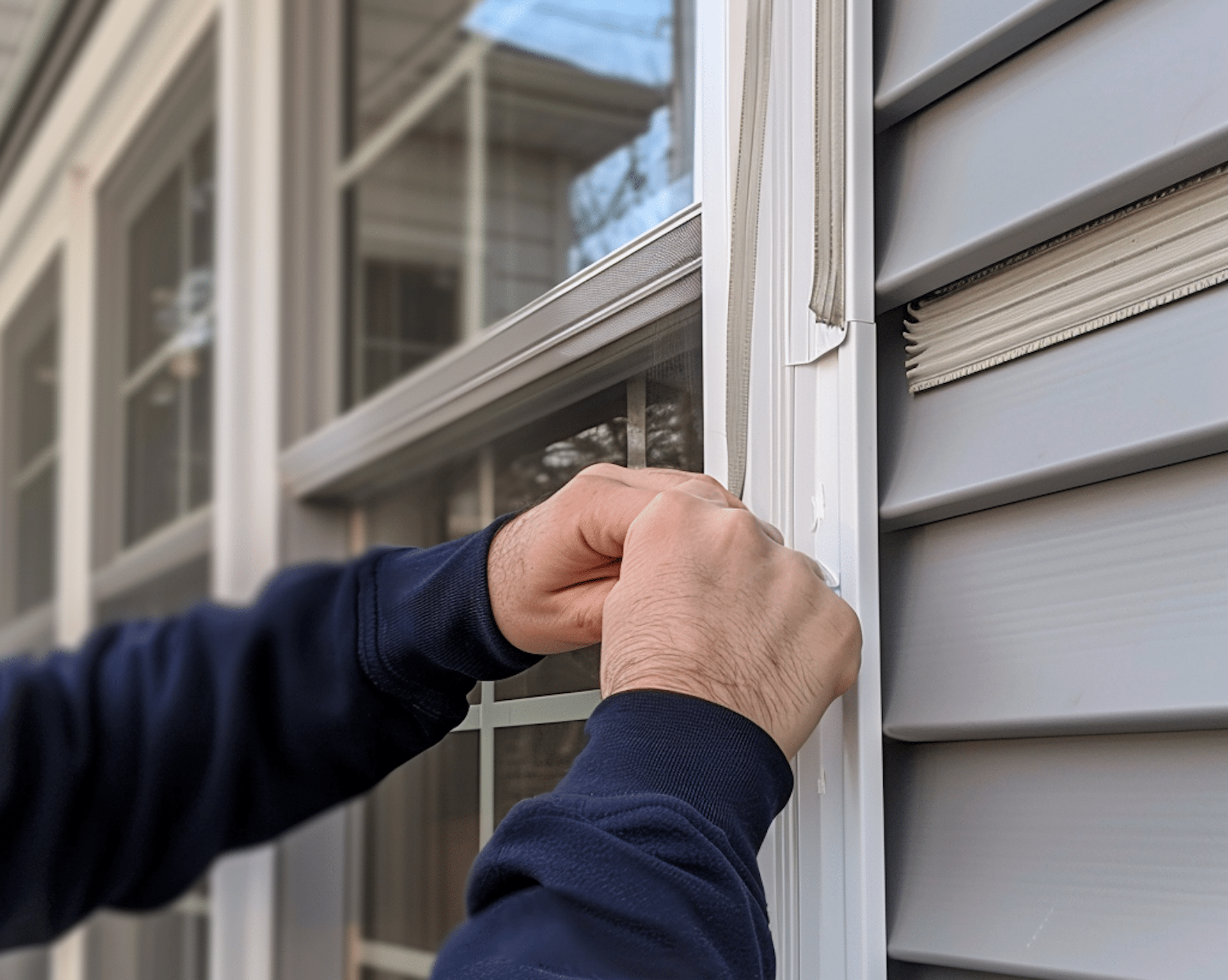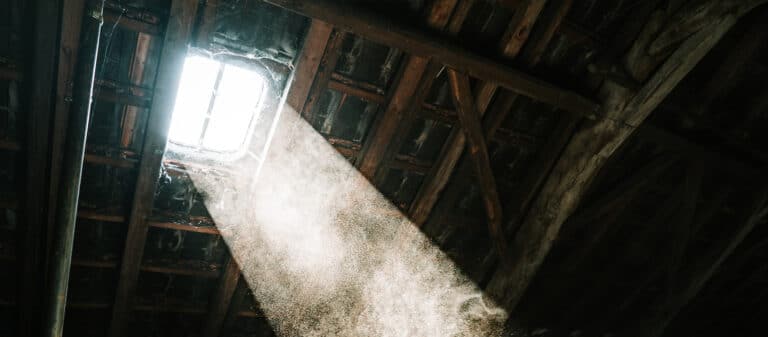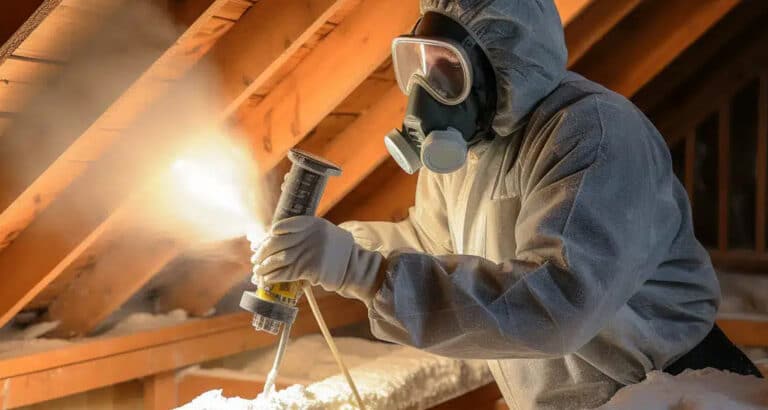Installing brand-new insulation in your attic or walls is a significant step toward reducing energy bills and feeling more comfortable. However, no amount of insulation will completely seal in your home’s thermal envelope without closing all gaps and cracks.
Not only are these pesky openings a potential vacuum for cold air in the winter and humid air in the summer, but they also allow pests and allergens to flood your home.
Learn how you can benefit from air sealing and whether or not you should hire a contractor or do it yourself.
Understanding Stack Effect: The Importance of Air Sealing
In colder regions like Scranton and the Poconos, winters can quickly get below freezing, and homeowners often pay a premium to heat their homes.
For many, small air leakages seem like a small price to pay compared to the cost of hiring a professional air sealer when they’ve already invested in new insulation.
Unfortunately, when warm air escapes from the attic during the winter, it also sucks colder air in through lower-level openings, such as exterior cracks or even poorly insulated windows.
This is what’s known as the stack effect. This same issue also manifests itself during the summer, allowing humid air to be sucked in through lower levels.
Air sealing disrupts the stack effect by both preventing desired air from escaping and preventing outside air from being sucked through lower levels of your home. Air sealing will significantly compound the benefits of any new insulation you install.
Homeowner Benefits of Air Sealing
Whether you pair air sealing with new insulation or decide to invest in air sealing on its own, you will see immediate results, such as:
- Reduced energy usage and lower utility bills.
- Improved indoor comfort, including less drafts.
- Fewer seasonal allergies.
- Less moisture buildup, preventing mold and mildew.
- Longer HVAC service life.
- Fewer pests in your basement or attic.
Keep in mind that air-sealing your attic is a great place to start, but there are opportunities for savings by sealing your basement, foundation, and wall cavities. Air sealing is not just about plugging a few pinholes in your attic either; homes need to be sealed from the ground up.
Can Air Sealing Be Done On Your Own?
DIY air sealing can be done in bits and pieces, but sealing your home completely will require the help of a professional.
Contractors have access to a variety of tools, including expanding spray foam, caulk, weatherstripping, and fire retardant fixtures, that may be costly or difficult to assemble on your own.
Even contacting a professional for an inspection can point you on the right path toward completely air-sealing your home.
Remember, air sealing requires reaching small and difficult places, such as band joists, plumbing penetrations, and foundations, which may not be easy for some homeowners.
Lastly, hiring professional air sealing services will ensure the project covers all gaps and is done properly.
11 Areas to Air Seal for Maximum Effectiveness
Air sealing these eleven spaces in your home will drive the most savings.
- Weatherstrip Doors and Windows. Doors and windows are the primary areas where outside air enters your home. Gaps beneath doors can easily be sealed with sweeps, and windows can be sealed with clear weatherstripping.
- Caulk Any Cracks in Exterior Walls. Small cracks naturally form as the foundation settles and Mother Nature takes effect. Caulking these areas seals off outside air, as well as allergens and pests.
- Install Fire Retardant Fixtures Around Recessed Lighting. Recessed can lighting cannot be insulated and will require a fire retardant fixture installed around it and sealed to prevent gaps in your attic roof.
- Seal Band Joists in Attics. Band joists provide small openings for air to escape that are often overlooked. Apply an expanding foam to seal these areas completely.
- Seal the Top Plate Above the Attic Drywall. The top plate above the drywall is another area where air escapes from your attic. Applying spray foam here has been observed to have the strongest impact on any air-sealing project.
- Reinforce Switch Plates with Foam Gaskets. Electrical wiring forms cavities and openings where air can escape. Seal these plates with handy foam gaskets.
- Apply Spray Foam Around Gaps Where Pipes Enter. Pipes are another area where gaps are bound to form and need to be sealed off using an expanding foam.
- Seal Soffits Over Cabinets. Soffits above cabinets offer open space for air to escape and can be sealed for greater comfort.
- Reseal Gaps in Crawl Spaces and Foundations. Cracks in foundation floors and crawl spaces naturally form as the house settles and will require a spray foam to seal every decade or so.
- Close Any Gaps Around Ductwork and Duct Boots. Ductwork leading to the basement can provide an opening for air to escape. In cases where ductwork leads to unconditioned space beneath subflooring, insulation may be recommended.
- Create a Barrier Between Homes and Garage Walls. Gaps between home additions, such as garages, need to be sealed to prevent air from escaping from living spaces.
Every point you check off this list will lead to positive results over time. However, if you want to maximize the results of an air sealing or insulation project, hire a trusted contractor like NEPA’s EnergySmart.
We offer the tools and expertise to air seal and insulate homes according to EnergyStar and IECC requirements for colder climates like NEPA. Contact us for a free quote today!
FAQs: Air Sealing Your Home
How much can I save by air sealing and insulating my home?
Energy savings can vary based on factors like home size and current efficiency. However, studies suggest that proper air sealing and insulation can reduce energy bills by up to 15% or more.
How often should I reevaluate my home’s air sealing and insulation?
It’s recommended to inspect your home annually for air leaks and insulation effectiveness, as seasonal changes and wear and tear can impact performance.
Will air sealing and insulation improve indoor air quality?
Yes, by reducing outdoor pollutants and moisture infiltration, air sealing and insulation can contribute to better indoor air quality and a healthier living environment.
Are there incentives or rebates available for air sealing and insulation upgrades?
EnergyStar provides a $1,200 tax credit for envelope upgrades, which cap out at $3,200 with any additional HVAC equipment upgrades, and there are several insulation tax credits and rebates available to homeowners in Pennsylvania.










